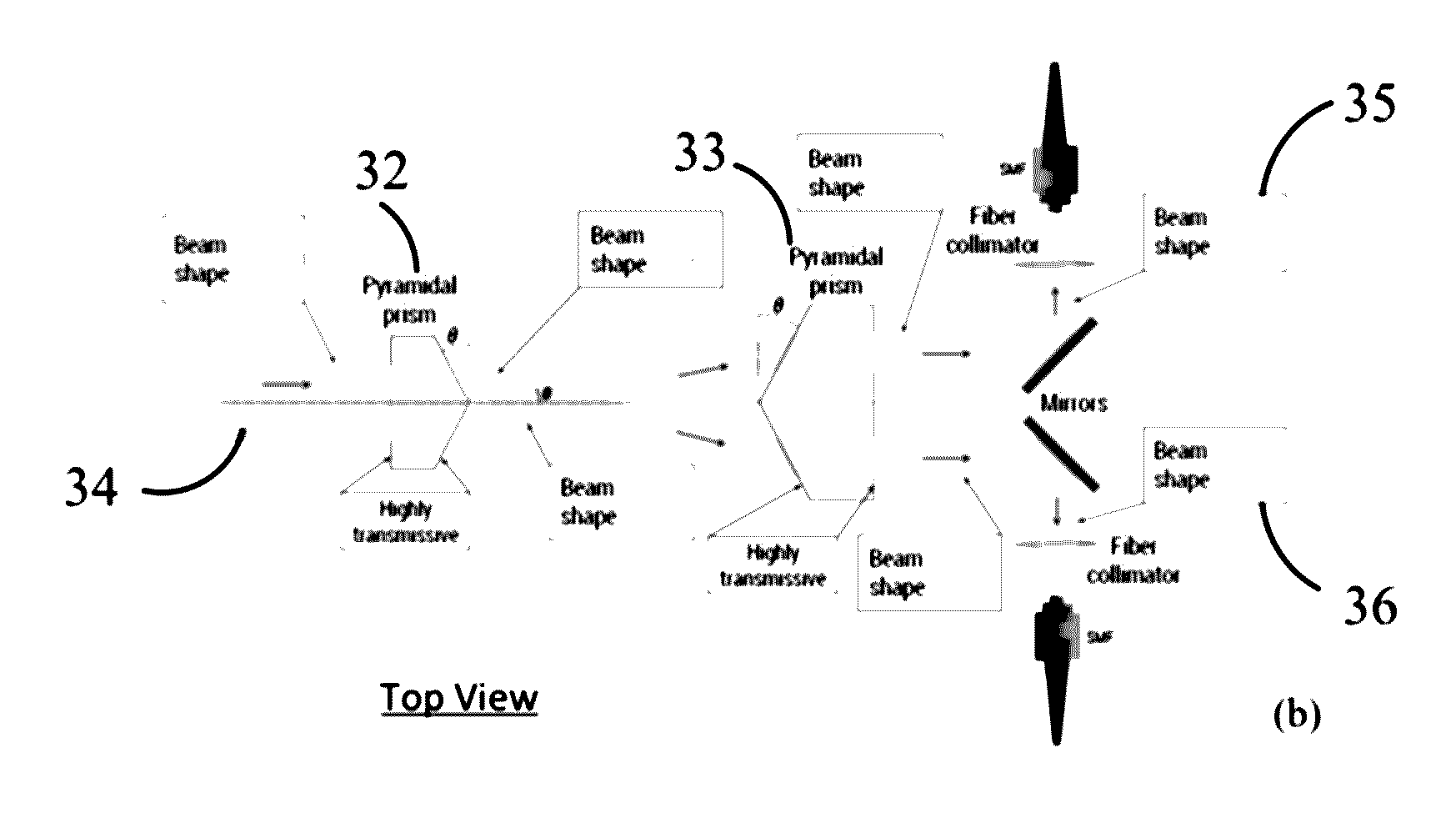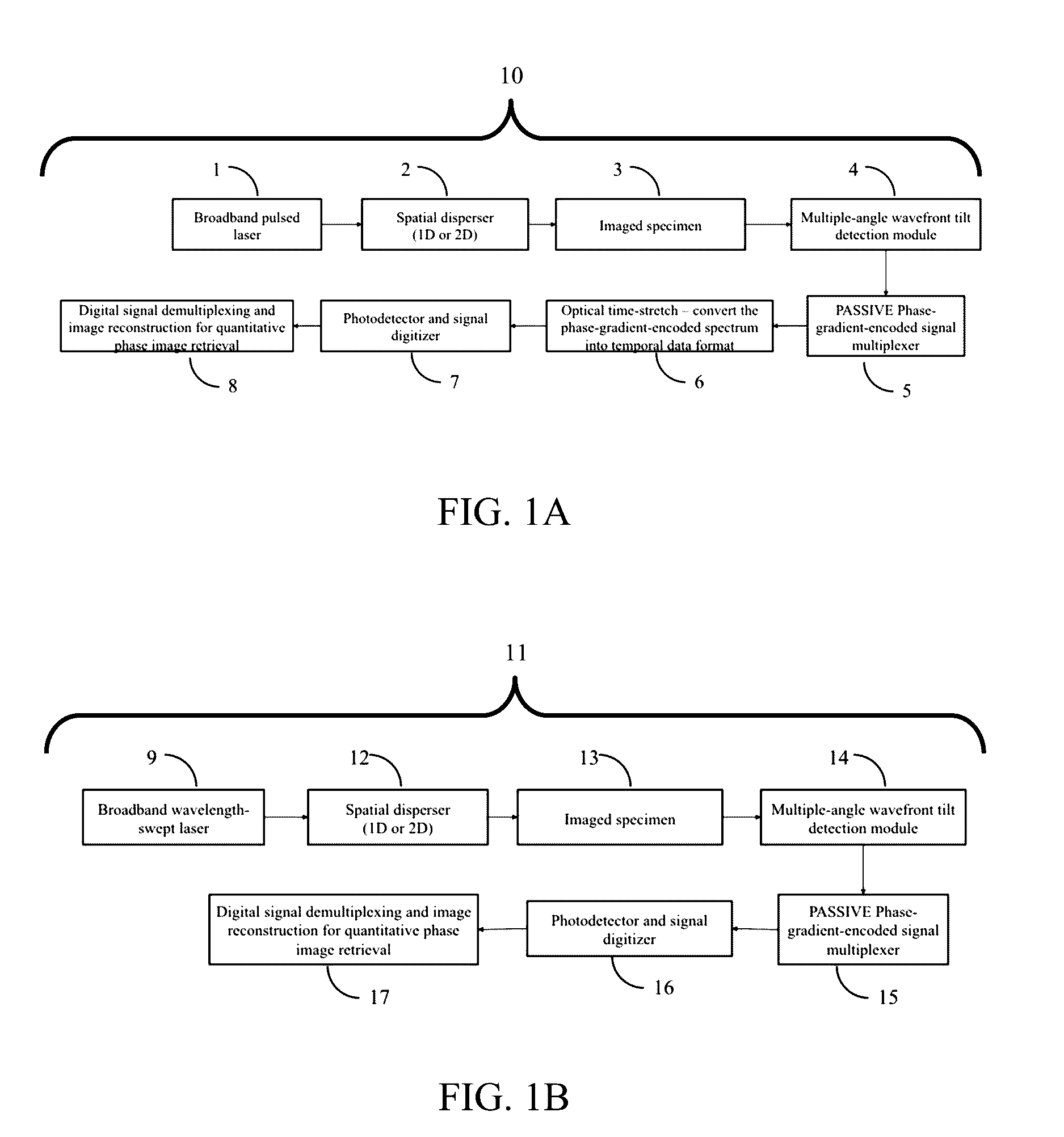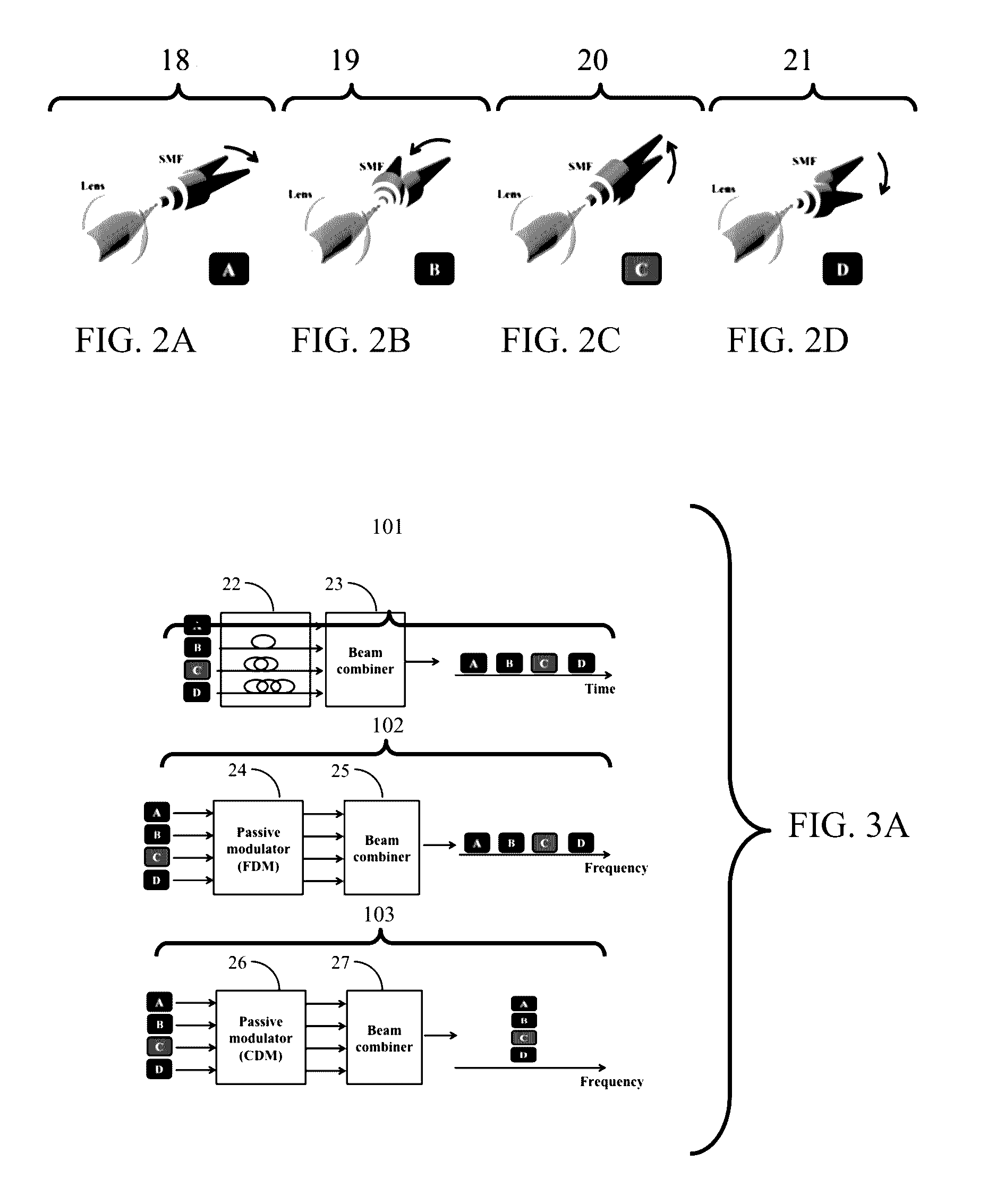Apparatus and method for quantitative phase-gradient chirped-wavelength-encoded optical imaging
a technology of optical imaging and chirped wavelength, applied in the field of apparatus and method for quantitative phasegradient chirped wavelength encoded optical imaging, can solve the problems of high heterogeneity, not always ideal in view, and the cost of higher content is typically at the expense of lower throughpu
- Summary
- Abstract
- Description
- Claims
- Application Information
AI Technical Summary
Benefits of technology
Problems solved by technology
Method used
Image
Examples
example 1
[0078]Quantitative phase retrieval was performed using a system as described herein. For N=4, the local wavefront tilt in the x- and y-directions, θx(x,y) and θy(x,y), introduced by the sample can be quantified by the simple algebraic relations in the paraxial approximation: θx(x,y)=C(I1+I2−I3−I4) / Itotal, θy(x,y)=C(I1−I2−I3+I4) / Itotal, where Ik are the four raw images captured at different coupling angles (k=1,2,3,4). Itotal is the total intensity of four raw images at (x,y). C is a constant which can be evaluated through system calibration. The phase φ(x,y) is obtained by the relation:
∇→ϕ(x,y)=2πθ→(x,y)λ,
which can be robustly solved by the Fourier integration method (see also, e.g., FIG. 2B). λ is the mean wavelength. This method eliminates the need for iterative phase retrieval algorithms, as in interferometry-based quantitative phase imaging, and thus greatly reduces the computational complexity; this is critical for real-time data processing at the uniquely high imaging speed. R...
example 2
[0085]In addition to the retrieval of quantitative phase images of each single cells, quantitative cellular parameters and thus cell analysis can be obtained from the quantitative phase and absorption images. With the use of the subject inventions or other QPI techniques, these parameters can be obtained non-invasively by derivations from the optical phase. Optical phase is directly related to the optical path length of the light transmitted through the cells, which is the product of the height of the cells and the refractive index difference to the neighboring substances. Common quantitative phase parameters include dry mass, dry mass density, phase volume and sphericity, which have been shown to provide significant values in cell classifications, tumor characterization and studies throughout cell cycle. These parameters can be derived from the following equations:
Drymass:M=1α∫ScellOPLcell(x,y)S=Scellα×OPLcell_Drymasssurfacedensity:M_=M / ScellPhasevolume:Vφ=∫ScellOPLcell(x,y)SSpheri...
PUM
 Login to View More
Login to View More Abstract
Description
Claims
Application Information
 Login to View More
Login to View More - R&D
- Intellectual Property
- Life Sciences
- Materials
- Tech Scout
- Unparalleled Data Quality
- Higher Quality Content
- 60% Fewer Hallucinations
Browse by: Latest US Patents, China's latest patents, Technical Efficacy Thesaurus, Application Domain, Technology Topic, Popular Technical Reports.
© 2025 PatSnap. All rights reserved.Legal|Privacy policy|Modern Slavery Act Transparency Statement|Sitemap|About US| Contact US: help@patsnap.com



